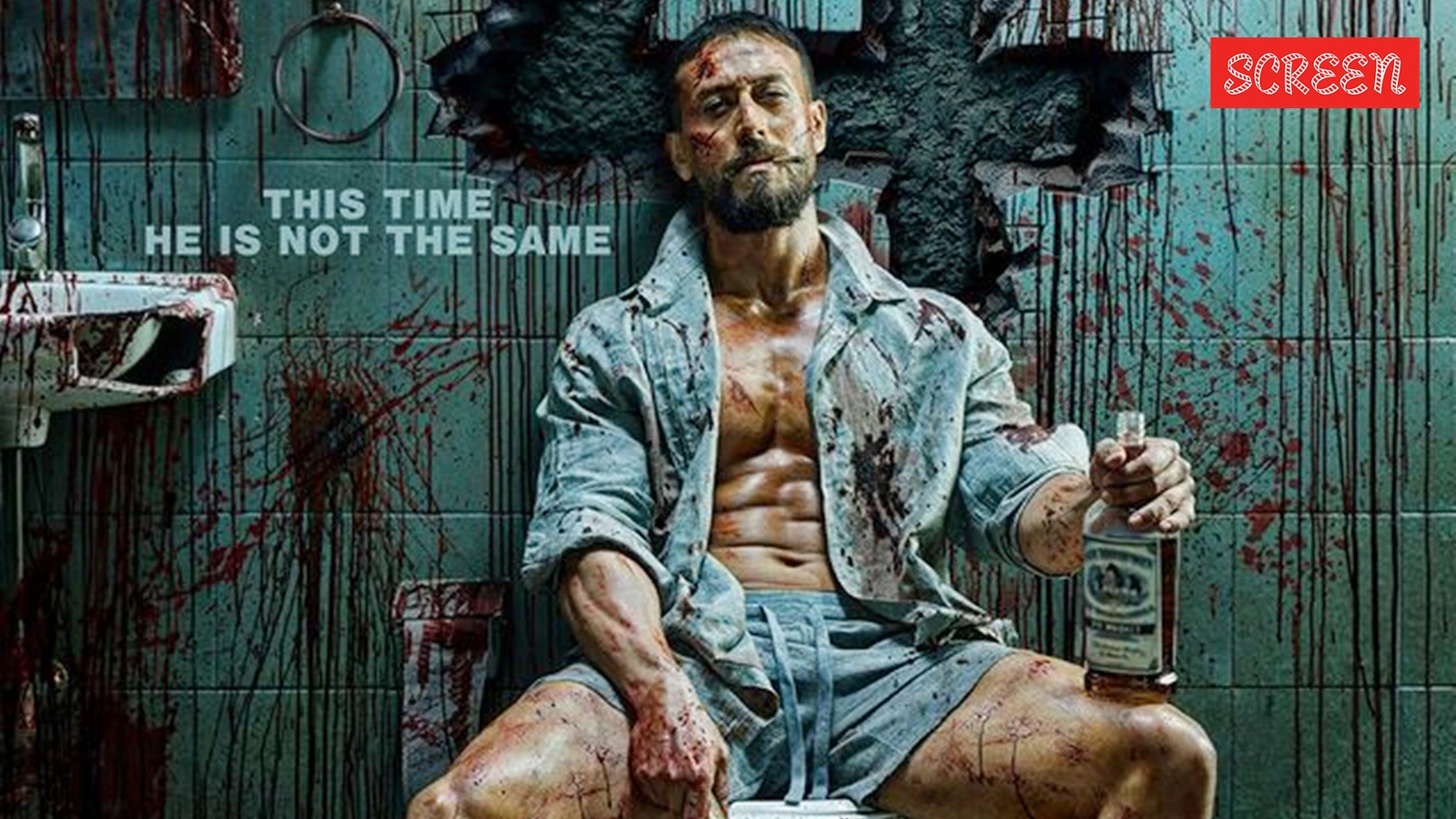A Fresh Plot with Familiar Roots
Baaghi 4 picks up the franchise with a promise of taking the story to unexplored territories, yet it never forgets its core: rebellion against injustice. Unlike its predecessors, where the central conflict was driven primarily by love or family ties, this film chooses a more layered and socially relevant backdrop. The narrative is built around themes of betrayal, corruption, and the fight for survival in a world where power dynamics crush the common man.
The film opens with an intense prologue, establishing the antagonist’s rise in a morally decayed system. This sets the stage for Tiger Shroff’s character, who is introduced not as an invincible hero, but as a man torn between personal struggles and societal responsibility. The story unfolds in a nonlinear fashion at times, revealing past traumas and present battles side by side. This storytelling technique adds depth and complexity, making the viewing experience far more engaging than a straightforward revenge drama.
Tiger Shroff as the Relentless Rebel
At the heart of Baaghi 4 is Tiger Shroff, reprising his role as the face of the franchise with unparalleled commitment. His character is portrayed with more emotional vulnerability this time, a refreshing change that humanizes the otherwise larger-than-life persona. Instead of being a one-dimensional action figure, Tiger’s role here explores layers of guilt, responsibility, and inner conflict.
One of the most powerful aspects of his performance lies in the way he balances raw aggression with emotional restraint. The audience gets to see a man who is not just fighting enemies in the physical sense but also wrestling with his own demons. This nuance is what makes his character arc memorable. Of course, Tiger’s trademark agility, fight choreography, and jaw-dropping stunts remain the highlight, but they feel more integrated with the story rather than existing as standalone spectacles.
The Antagonist: A Worthy Opponent
Every great hero needs a formidable villain, and Baaghi 4 delivers on this front. The antagonist is not a generic caricature but a well-written character with clear motives, a tragic backstory, and a magnetic screen presence. His philosophy of power and control stands in sharp contrast to the hero’s idea of justice and rebellion, making their conflict more ideological than physical.
In many ways, the antagonist mirrors the hero, creating a “two sides of the same coin” dynamic. This narrative choice makes their confrontations feel inevitable and deeply personal. The audience is not just rooting for the hero to win, but is also invested in understanding what drives the villain. This layered approach to the antagonist elevates the story beyond a simple good-versus-evil template.
The Female Lead: Strength and Substance
One of the recurring criticisms of the Baaghi franchise has been the underutilization of its female characters. In Baaghi 4, the makers clearly attempt to correct this. The female lead is not just a love interest or someone who needs rescuing, but an active participant in the story. Her character brings emotional grounding, strategic thinking, and moral clarity to the otherwise action-heavy narrative.
She shares a strong chemistry with Tiger Shroff, but their relationship is written with maturity. Instead of being defined solely by romance, their bond is built on mutual respect, trust, and shared struggles. This makes her role much more impactful, and audiences are likely to appreciate this step toward giving female characters greater agency in action cinema.
Supporting Cast: Adding Depth to the Drama
Apart from the hero and villain, the film boasts a solid supporting cast. Each side character has a distinct role that contributes to the overall narrative. From loyal friends to corrupt officials, from comic relief to tragic victims, every character has a purpose. What stands out is that these characters don’t feel like filler; they add texture to the world of Baaghi 4.
A mentor figure, in particular, deserves special mention. His presence brings wisdom and gravitas, grounding the hero’s journey with philosophical insights. This mentor-mentee dynamic adds another layer of emotional resonance to the film, reminding audiences that rebellion is not just about brute force, but also about understanding values worth fighting for.

Storytelling Style and Pacing
One of the noticeable improvements in Baaghi 4 compared to earlier installments is its pacing. While the film is packed with action, it takes time to breathe in the quieter moments. Scenes of introspection, dialogue-driven confrontations, and flashbacks enrich the narrative. The film doesn’t rush from one fight sequence to the next; instead, it carefully builds tension before unleashing chaos.
The screenplay also introduces subplots that intertwine neatly with the main storyline. For example, the female lead’s personal stakes align with the hero’s mission, and the antagonist’s backstory connects to a larger political conspiracy. These interwoven threads create a sense of cohesion that keeps viewers invested from start to finish.
Emotional Core: Beyond Just Action
At its core, Baaghi 4 is not just an action film; it’s a story about resilience, sacrifice, and the cost of rebellion. The emotional beats hit harder this time, particularly because the characters are more fleshed out. The audience is not only impressed by the hero’s stunts but also moved by his vulnerabilities. The narrative forces us to ask: what does it mean to be a rebel? Is it about defeating external enemies, or is it about conquering fear, doubt, and despair within oneself?
These deeper themes give the film an edge, ensuring it resonates beyond just adrenaline rushes. For fans of cinema who crave both spectacle and substance, this combination works beautifully.
